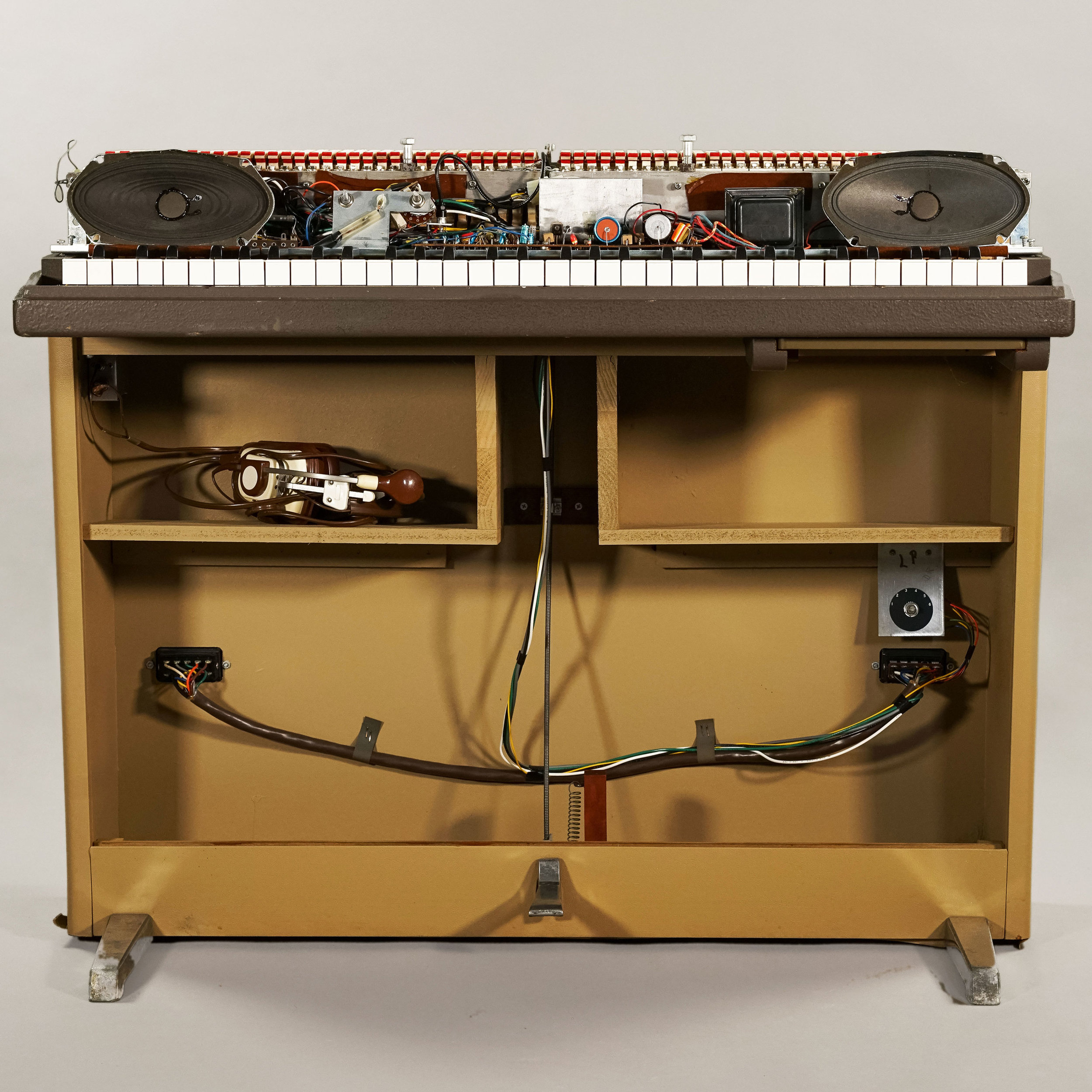Techniques for Recording a Wurlitzer Electronic Keyboard
The Wurlitzer electronic keyboard was first commercially released by Wurlitzer in 1955 as a convenient (and potentially silent) tool to practice and study piano. But, almost immediately after its release, the instrument was discovered by professional musical talent such as Ray Charles and found its way to stages and recording studios. Because of the instrument’s unmistakably unique and warm tone and numerous practical advantages, it was a solid choice for recording artists from the very beginning.
Easy Fixes for Malfunctioning Wurlitzers
Some issues involving a vintage Wurlitzer electronic piano are complex to resolve. Others are caused by loose hardware, disconnected wires, or pieces of debris. If you’d like to try some easy fixes before you call a tech, here are some steps that you can take.
From the Archives: Wurlitzer 200
We have a soft spot for the 200, because it was our first Wurlitzer electronic piano. Our favorite Wurlitzer model changes from minute to minute, but the 200 always has a strong case. It’s the final iteration, sleek and stripped-down - not an inch of wasted space - with features that have been arguably perfected from the previous versions. Electronically, though, it’s still ancient technology. It’s rough around the edges. The 200a was a necessary upgrade - but that doesn’t mean that we have to like it better.
What's the Difference Between a Rhodes and a Wurlitzer?
The Rhodes and the Wurlitzer are sometimes mentioned interchangeably, but they’re actually pretty different. We do spent 99% of our time around electronic pianos, but trust us: it’s not just our bias talking. A Rhodes and a Wurlitzer sound different, feel different, and were invented in completely different contexts. Most studios would benefit from one of each. (Well, one Rhodes and two or three Wurlitzers - but now this might be our bias talking.)
Steps to Restoring a Vintage Wurlitzer Keyboard
How do we restore a Wurlitzer electronic piano? Here’s a list of all the issues we commonly address.
Wurlitzer Quick Reference Chart: Things We Included, and Things that We Didn't
Not going to lie: it was hard to narrow down the many variations of a Wurlitzer to create our Wurlitzer Quick Reference chart. We decided to do a quick write-up of all the subtleties that the graphic glosses over. And - let’s be clear - everything about that chart is a subtlety. Every Wurlitzer has that iconic Wurlitzer sound, and any model is capable of being restored to a highly playable, musical state. Amps can be modded for aux outputs and vibrato. Noise can be minimized. Console models can be put on legs. Portable models can be attached to consoles. (We have so many 206 bases. Please help us.) The chart is mostly about where you want to start, and how much work you want to put into your Wurlitzer to make it an exceptional piece of gear in the age of digital recording.
Anyway, here’s a few notes on the chart about the things we included, and the things we left out.
Choose the Right Wurlitzer Model with our Quick Guide to Wurlitzers!
Having trouble deciding which Wurlitzer model is right for you? Take a look at our handy infographic!
This infographic is an at-a-glance guide to the features of common Wurlitzer models. All models of Wurlitzers are excellent instruments, and with the right restoration any one of them can become a functional, professional piece of gear. However, all Wurlitzers were manufactured 40+ years ago, at a time when standards for recording were much different. And, anyway, professional musicians weren’t necessarily the most lucrative target audience: that would be schools, who bought keyboards six at a time. So, some features that would be standard today - such as an aux output - are absent from many models.
How to Remove Your Wurlitzer's Lid
Wurlitzers have a lot of moving parts under the hood, many of which can be adjusted to the player’s taste. Regulating your own Wurlitzer means that you can dial in the feel and touch-responsiveness that you prefer, making your keyboard truly your own. Of course, the first step to regulation is taking off the Wurlitzer’s lid.
How to Clean an Electronic Piano, Part II
If you’ve read Part I of our guide on how to clean an electronic piano, you’re familiar with the general technique. (Spoiler alert: Take everything out and then start cleaning.) In Part II, we’ll discuss how to tackle some more specific and serious messes.
About the 1981-1984 Late-Model Rhodes Mk II
The last iteration of the Rhodes Mk II, released between 1981 and 1984, is one of our favorites. Despite having more plastic parts than previous models of Rhodes, we find that keyboards of this period tend to have a dynamic, modern feel and excellent timbre. Plastic has a bad reputation these days - which it deserves - but this model of Rhodes is a rare case of plastic manufacture improving a product’s consistency and longevity.
Here’s a list of the details that are unique for the last years of the Mk II.
In Restoration: Four 206 model Wurlitzers
We are extra-excited about this group of four Wurlitzer 200 student pianos because they are clearly of an early manufacture. Three of them had original music racks with the closely-spaced metal bars, which are incredibly rare. Even aside from that great detail, however, all of the keyboards were in great shape. They had clearly been used only lightly and had been stored in a clean, low-humidity area.
Seeing Double: Wurlitzer 700
It's always a pleasure to have two examples of the same vintage model in stock, but these Wurlitzer 700s are extra exciting. The 700 is not as well-documented as the later plastic-top Wurlitzer 200, and are often overlooked by collectors because of their traditional spinet-style cabinets. Acquiring two 700s gave us the rare opportunity to compare two rare electronic pianos.










